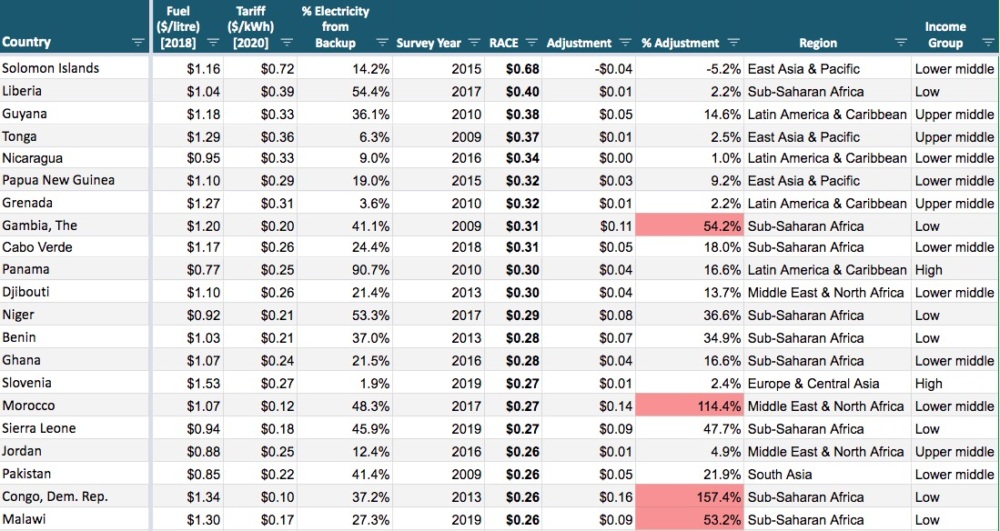Reliability-adjusted cost of electricity (RACE) estimates the cost of industrial tariffs for grid power plus the additional cost of backup generation, weighted for how often grid power is unavailable.
This incorporates data for:
- Tariff price. Average industrial tariffs in US$ per kilowatt-hour (kWh).
- Reliability. Estimate for how often the grid is available/unavailable for an average firm.
- Self-Generation Cost. Estimate of the cost to firms of providing their own electricity when grid power is unavailable, using the most prevalent or cost-effective option.
With the above data inputs, the following formula was used as the basis for the model:
RACE = (grid tariff * % grid available) + (self-generation cost * % grid unavailable)
Explore our Data
Find out a country’s RACE by viewing our pilot RACE database.
The first set of information is the basic inputs — the cost of tariff and cost of self-generating electricity — that we use to calculate RACE.
The second set of information is generated based on our calculations, including RACE along with the differences over the base tariff. Country information is provided for additional context.

Data Sources
Fuel Price: GIZ International Fuel Prices 2018-2019 is the most comprehensive dataset for fuel prices worldwide, covering gasoline and diesel prices for 179 countries on a biennial basis. We convert diesel price into an electricity price using plausible assumptions for generator size, operating costs, and efficiency that are described in our main report.
Tariff Data: Doing Business by the World Bank, 2020.
Electricity from Backup: In our pilot database, we use generator usage data from the most recent year available in the World Bank Enterprise Surveys.
Income group and region: World Bank Categorization.
GNI Per Capita: World Bank Development Indicators, 2017.



